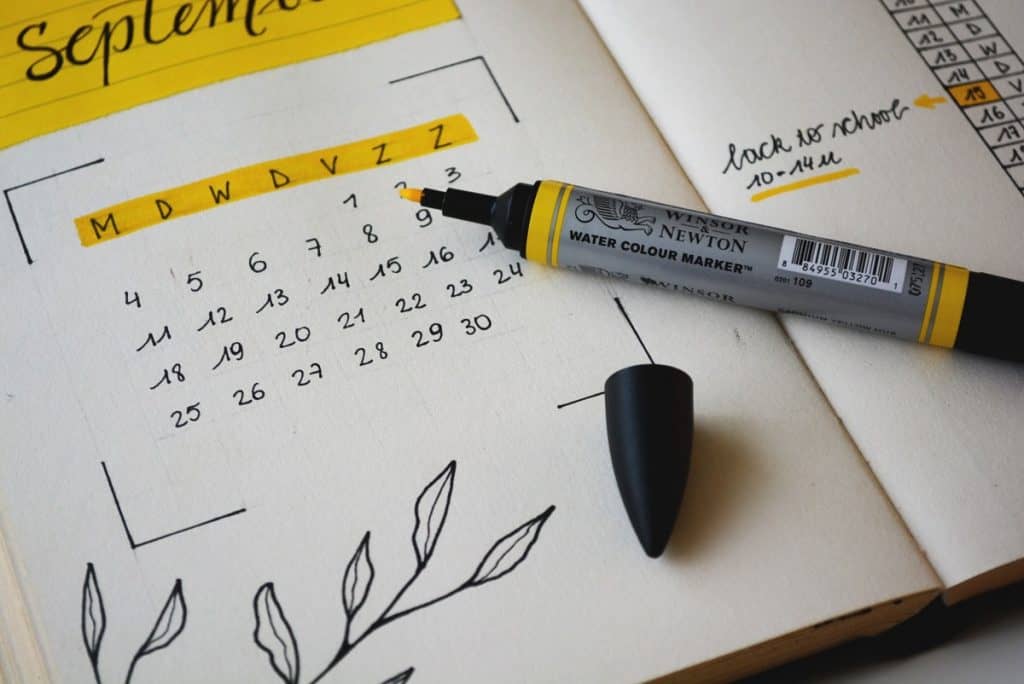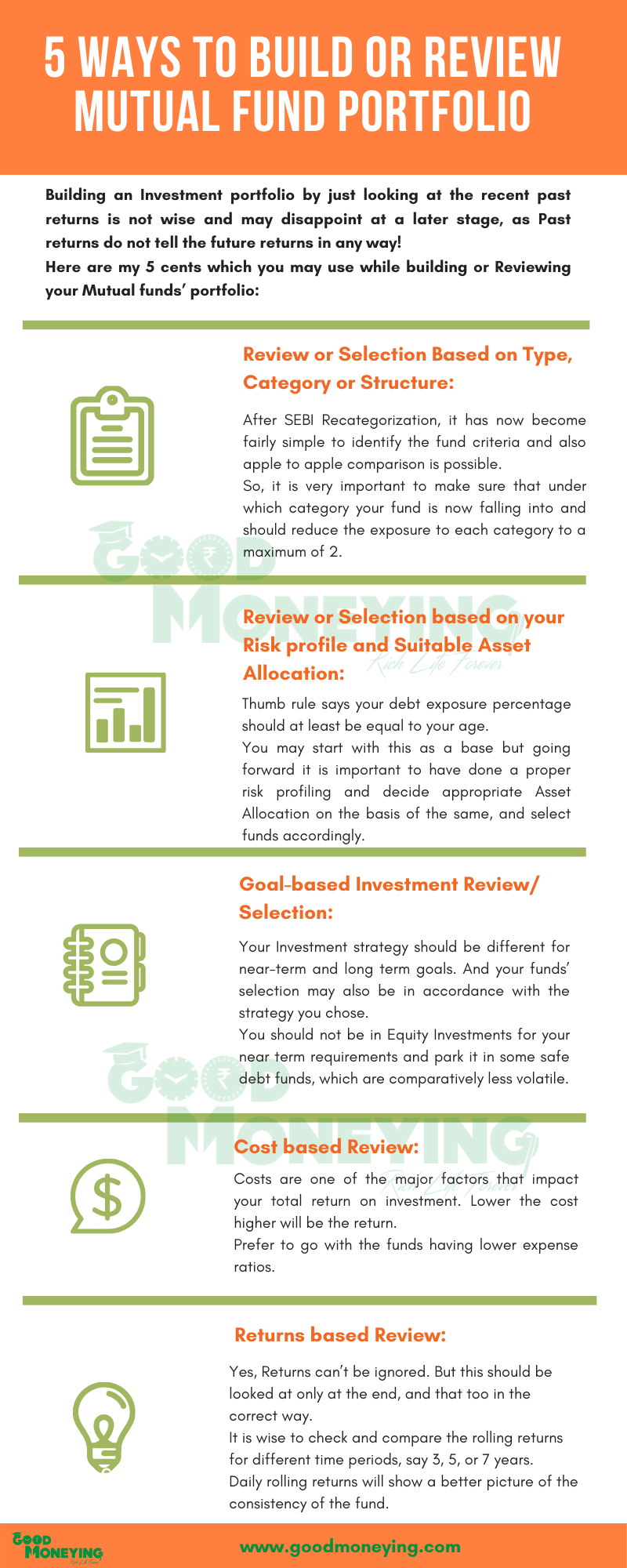Building an Investment portfolio by just looking at the recent past returns is not wise and may disappoint at a later stage, as Past returns do not tell the future returns in any way. It is the wrong way of selecting investment products especially market-linked products like Mutual funds.
Many new investors who have entered into this space in 2018, by looking at 2017 returns are not looking happy with their Investments. Not only Equity Investors, even the debt funds investors are saying “Isse behtar to FD ya RD mein invest kar diya hota”.
The problem here is not the product, but with your limited understanding of the product.
Volatility is the basic feature of Equity Investment and nowhere it is written that you will keep getting the same returns year on year, which is why you enjoy a different taxation in such products.
This post is for all those who already have a Mutual funds investment portfolio at place whether invested recently or have been investing since quite some time and even for those who have plans to invest in Mutual funds in coming future.
Reviewing Mutual funds portfolio at this juncture is also important because of the recent changes in mutual funds structure due to the Sebi new categorization rules. This is to make sure that you are still having the same kind of portfolio which you have invested in at first place.
You have to devise a process for designing an investment portfolio. I understand that Good Returns are the ultimate thing that any investor wants to get, but you have to understand that returns are the by-product of the process you follow.
Here are my 5 cents which you may use while building or Reviewing your Mutual funds’ portfolio. You may use it as a step by step approach while building an Investment Portfolio.
How to build or Review a Mutual funds’ Investment portfolio?
- Review or Selection Based on Type, Category or Structure of the fund:
With the aim of simplifying the funds’ selection criteria for investors and help them compare apple with Apple, Sebi came up with Mutual funds categorization rules and mandated all fund houses to restructure their offerings based on the new rules.
SEBI came up with 10 Equity fund categories, 16 debt fund categories and 6 categories in Hybrid funds. Fund houses were told to fit their offerings in these categories and not to keep 2 funds in the same category. (Read More on Categorization rules and Types of Mutual funds)
It has also defined the Large caps, Mid-Caps and Small cap stocks, to keep things standardised. Else earlier fund houses used to have their own definition of different market capitalisation schemes.
All this has made it easy for the new investors to select the mutual fund, but along with having made it important for the old investors to review their existing Mutual funds’ investment portfolio, as some funds have completely changed their funds’ category and structure which may impact their future returns.
Like for example,
HDFC Prudence which used to be an Aggressive balanced fund now has become HDFC balanced advantage fund, a Dynamically Asset Allocation category.
ICICI Dynamic Plan which used to be a Diversified Equity fund, now has become Multi-asset fund which mandatorily has to have 10% of exposure to 3 asset classes.
So, you have to be sure what category your fund is now falling into and should reduce the exposure in the category of fund you have to a maximum of 2.
Also, do understand that you do not have to be in all categories of the fund in the name of diversification. The total number of equity funds in your investment portfolio should not be more than 5-6.
- Review or Selection based on your Risk profile and Suitable Asset Allocation
Once you understood the Type and categories of the fund, now you have to understand yourself.
I know you like returns but high returns, many times comes with high volatility. And If high volatility bothers you then you should not be into high equity exposure.
Debt is a fixed income product but it is also not devoid of risks and volatility. It is considered safe, but safety has its own risk. Inflation risk, Interest rate risk, default risk etc. you have to understand it all.
(Also Read: Why debt investments should be a part of the Long-term portfolio?)
If you work with a financial planner then he/she must have done your risk profiling properly and guide you on what kind of asset allocation will suit you, but if you are doing your investments yourself, then you have to devise your allocation wisely.
Thumb rule says your debt exposure percentage should at least be equal to your age. You may start with this as a base but going forward it is important to have done a proper risk profiling.
Risk profiling is like knowing your Blood Pressure before taking any medicine.
- Goal-based Investment Review / Selection
The Asset Allocation you decide onto will always be for a long-term portfolio say for more than 7 years investment, but for short to medium term your mutual funds’ investment portfolio should be as per your goal requirement.
Say for example you need to pay for your daughter’s college fees after 3 years, you should not invest the money required or stay invested in any pure equity investment, no matter how positive the scenario looks like. (Read: How to manage child education expenses through laddering approach)
Same way when you are in your retirement years, your goals is to generate monthly income from your investment portfolio, and not to keep it for long-term growth. (Read: Use Bucketing to manage Retirement cash flow)

So, you Investment strategy should be different for near-term goals. And your funds’ selection may also be impacted with the strategy you chose.
Check out your Fund portfolio, if these are meant to support some near-term goal, then better to review it and select the suitable funds.
- Cost based Investment Review
This is another Interest way to review the Mutual funds’ investment portfolio. You must have observed that lately, you have started receiving messages from your fund houses on the TER (Total Expense Ratio) of the funds that you have invested in.
This is because that SEBI has mandated mutual fund companies that whenever there is a change in the TER, AMCs are required to inform the investors of the scheme through Email or SMS, at least 3 days prior to the change. This is applicable since March 1, 2018.
SEBI has also mandated AMCs to disclose the actual TERs on daily basis on their websites. (Ref: SEBI Circular number SEBI/HO/IMD/DF2/CIR/P/2018/18 Dt. Feb 05,2018)
This TER is the cost that is charged to you by the fund houses to manage your money. Know more about expense ratio here
While selecting funds for your investment portfolio, you may go with the funds having lower expense ratios. Costs are one of the major factors that impact your total return on investment. Lower the cost higher will be the return. Direct Mutual funds are the cost-efficient variant where the TER is comparatively less than the Regular peers.
But, more than cost your process of selecting the suitable funds, your staying put with it for a longer period of time, your coming out of it with some genuine reasons, your personal financial Planning strategy impacts the long-term return of the Investment portfolio. (Read: Invest in Direct, but financial planning way)
Please understand that its not the school, but the handholding, counselling and teaching in that school that makes your child a better Human being. The Parents role is equally important. But Neither Parents nor Teachers alone can do it. They have to work together.
So, when your Investments needs the support of a financial planner then there is no harm in asking for it. It may not reduce the cost but this cost will be to increase the returns.

- Returns based Review
Yes, you cannot ignore the Returns. But this should be looked at only at the end, and that too in the correct way.
Last year returns do not matter much. Annualised returns may also be deceiving, as it may be because of some years’ good performance and many years’ bad performance.
It is wise to check and compare the rolling returns of the fund for different time periods. Time periods could be the period for which you would like to stay invested in this fund. Say 3 years, 5 years, 7 years.
Daily rolling returns will show you a better picture of the consistency of the fund.
Now, while checking returns be Rolling or annualised you should better be aware of the structure of the fund and any changes happened in it in recent times or due to the restructuring due to SEBI guidelines.
As I gave an example of HDFC Prudence above which was earlier an aggressive balanced fund but now comes under balanced advantage category, so if you compare this fund with others in its category, you will always find the past returns been more aggressive in HDFC Balanced advantage.
And for future investments, your selection should depend on its strategy and not the past returns.
Investment Portfolio Review – Conclusion:
Knowing your funds well and reasons they are in your Investment portfolio is very important to review them. As unless you know the reasons behind their presence you cannot justify the decision to remove them from the portfolio.
Investment returns may be one of the reasons, but the problem is that numbers keep changing, and depends on multiple factors. Your portfolio should not be changed too fast like performance numbers, as you have a certain goals and expenses in mind.






I want to have my MF portfolio reviewed.
Review has to be backed by certain reasons, for instance, your financial goals, risk profile, asset allocation etc. So, a holistic picture of your finances is required for reviewing the portfolio.
Please click on the link below and go through our service offerings:
https://www.goodmoneying.com/personal-financial-planning-services